The exhibition celebrating the knotty wonder of trees
- Published
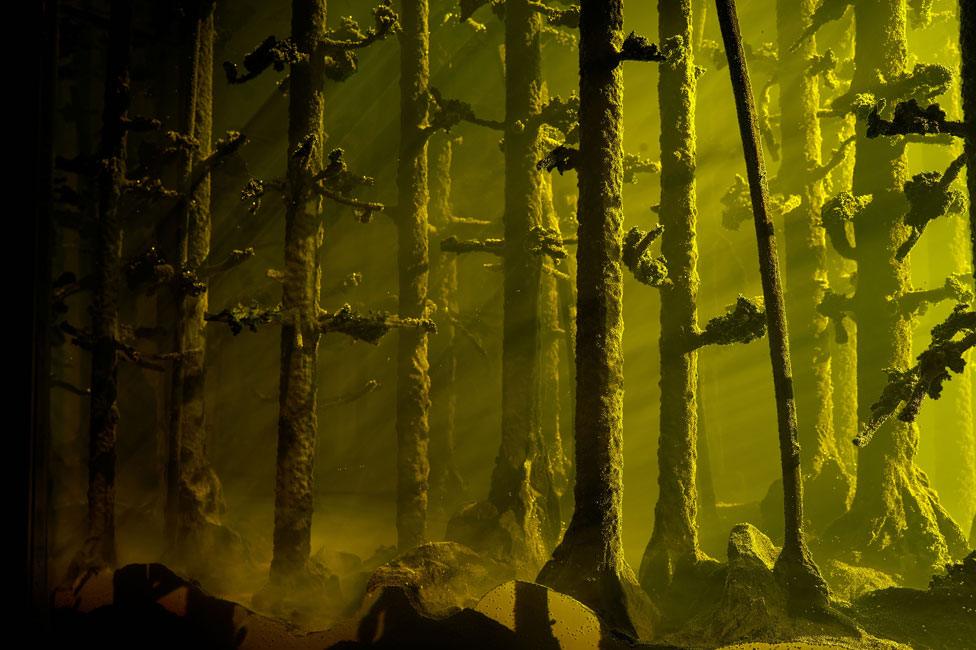
Mariele Neudecker's And Then the World Changed Colour: Breathing Yellow
The director of London's Hayward Gallery has been wanting to organise an art exhibition about trees for 25 years. But it's all come together at a time when they're in the news in ways he could never have expected.
"We're seeing images everywhere of burning forests, whether it's in Australia or California or the Amazon," says Ralph Rugoff.
"So a lot of us are now thinking about trees. But I think artists really started making work about trees in new ways in the late 1960s. At the time Rachel Carson's book Silent Spring was a big influence on how we thought about the environment.
"New work after that was different from what had come before because the tree was no longer just a piece of landscape: it was saying something about the effect we were having on the world around us."
The new show features the creations of 38 artists from around the world and includes paintings, photography, sculpture and digital work. Many pieces celebrate the sheer beauty of trees.
One particularly striking piece is Forest by French artist Eva Jospin. At five metres tall it fills a large section of wall at the Hayward. It's made of intricately worked trunks and branches and twigs all made of cardboard which make you believe you could walk into the forest's non-existent depths.
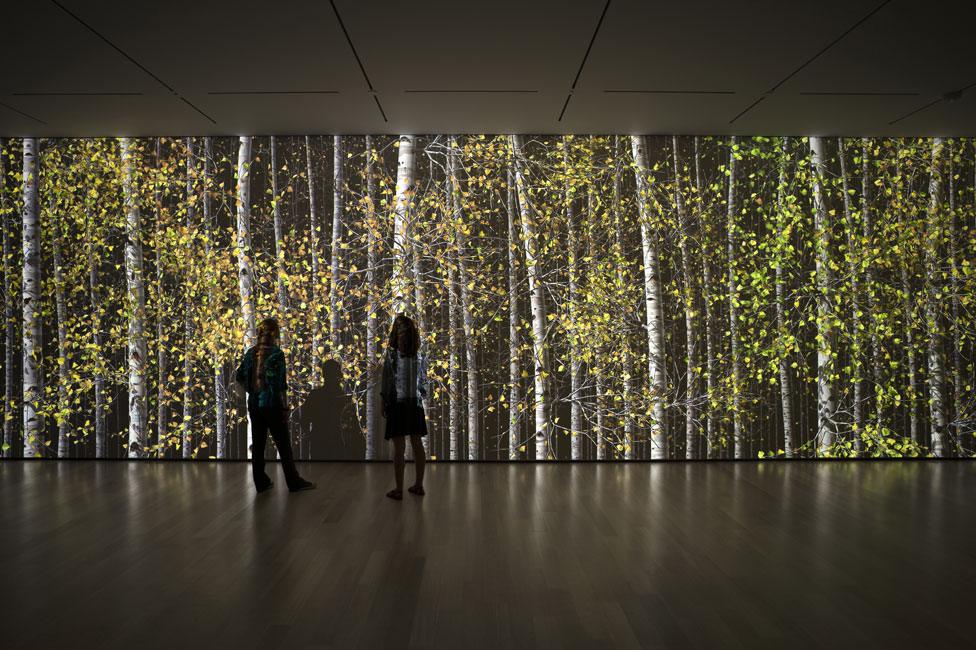
Jennifer Steinkamp's Blind Eye
Rugoff says the dark majesty of forests was bound to occur as a theme.
"We've always thought of the forest as uncanny: often they're very beautiful but you can get lost in them too. If you could walk into Eva Jospin's creation you might never get out."
A gorgeous digital forest, designed by the American Jennifer Steinkamp, gets a big room to itself. The woods in Blind Eye cycle endlessly through the four seasons. Rugoff says he expects people to settle and watch the process for long periods of time.
"The Japanese have this concept of tree-bathing where you go into the woods to experience the atmosphere the trees create. I think it's the same with Jennifer's piece even though it's all in a computer."
At first sight Kazuo Kadonaga's Wood Number 5 appears simply a large cedar log, though a very attractive one. In fact the artist sliced the tree into roughly 800 lengths, each not much thicker than a sheet of paper, then put it back together.
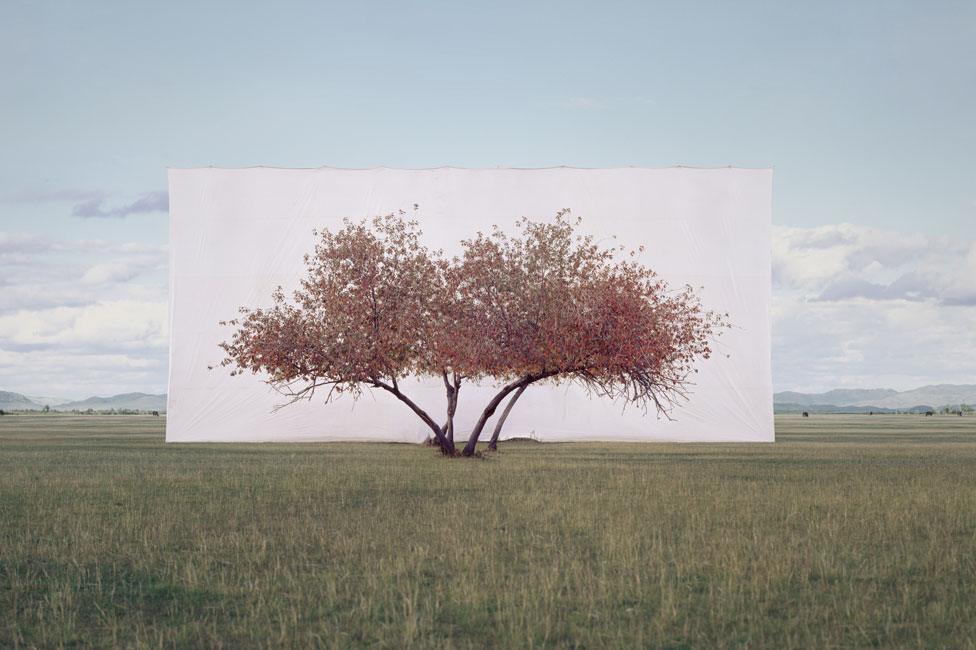
Myoung Ho Lee's Tree Number 2
The process draws attention to what the tree actually consists of - something we usually take for granted.
The Swiss artist Ugo Rondinone's Wind Moon looks like a real, massively gnarled olive tree. In fact it's an aluminium cast of a tree in the south of Italy which was at least 1,500 years old.
Rugoff loves the way it's coated in white enamel. "The original tree had been twisted in winds and had been burnt by the Italian sun and the branches give it a wild head of hair. One of our artists told me he thought trees are the perfect sculpture in themselves and you can see that in the olive tree."
Some of the exhibits are enjoyable for their beauty while others contain overt social statements.
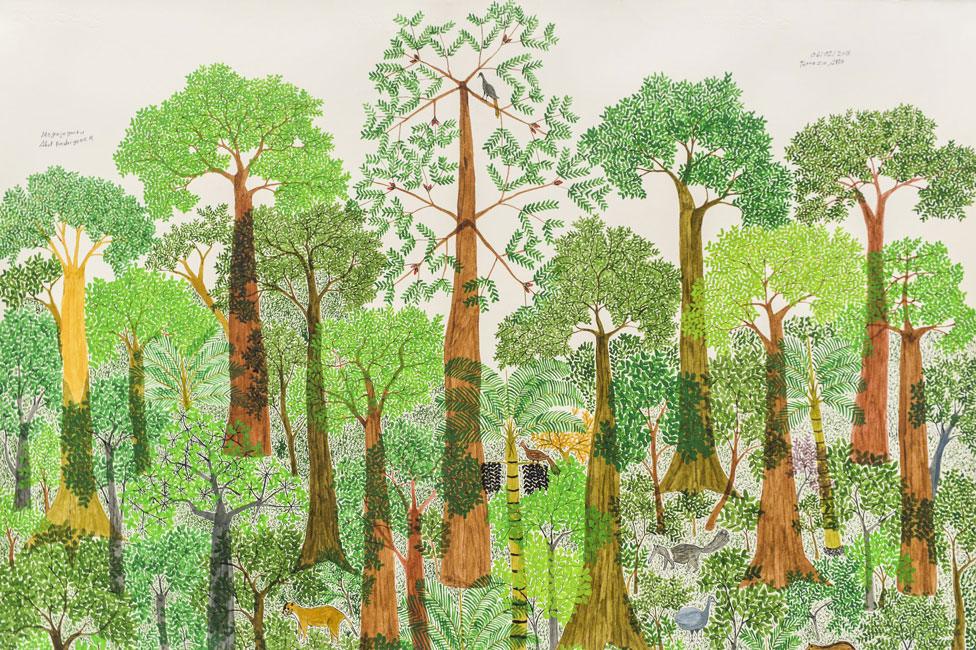
Abel Rodriguez: Terraza Alta II
Steve McQueen's photograph Lynching Tree is of a poplar he saw in Louisiana while filming the Oscar-winning Twelve Years a Slave. The tree's history is chilling: it made a convenient gallows in the slave era and many black Americans lay buried around it.
The Colombian artist Johanna Calle campaigns for the rights of the dispossessed in her country. Her image on paper of an Andean walnut tree is seen on closer inspection to be formed of typewritten words from the country's 2011 Law of Land Restitution.
"The law is about how peasants will regain the land rights they lost during the armed conflict in my country. Many of them have been displaced from the land by the violence. The work reproduces the walnut tree at almost life-size - a familiar sight in Colombia. You can enjoy the shape of the tree but the words it contains are about political reality."
Rugoff has balanced the attractive and the unsettling in selecting material for Among the Trees.
"For instance I really admire a small piece by Mariele Neudecker which has small trees in water, all contained within a clear plastic box. But it's disturbing because there's a sort of yellow mist starting to envelop the trees and it shouts at you of how we've polluted nature. It's slightly apocalyptic and reminds me of when I used to live in LA and the smog came.
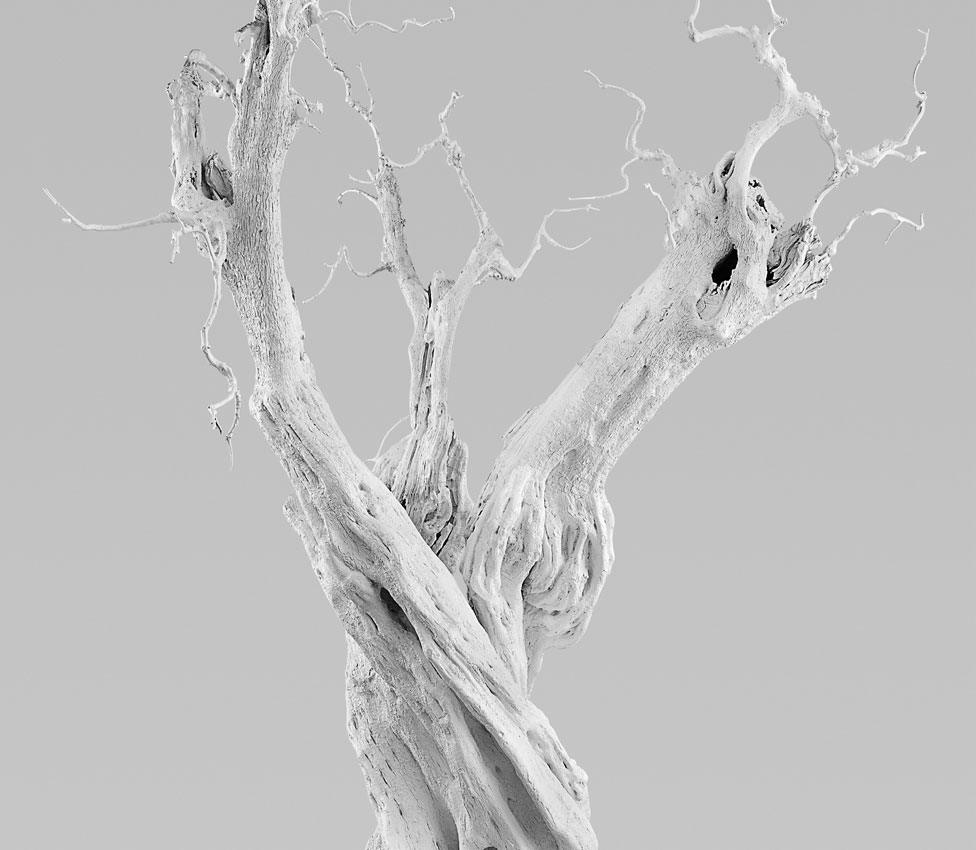
Ugo Rondinone: Wind Moon
"But the huge video installation Horizontal, by the Finnish artist Eija-Liisa Ahtila, is utterly restful. Like Blind Cycle it's something people simply stand and enjoy for minutes on end - though in this case it's video rather than computer animation.
"It was shot with the camera sideways and you see an 11-metre Finnish spruce divided into six in a way which makes you look with fresh eyes."
The concrete expanse of London's Southbank Centre doesn't boast much foliage but Rugoff says the exhibition is for all lovers of trees, of nature and of art. "London's estimated to have 8.5 million trees and one of the great things about London life is that trees are never really far away.
"So you can come and enjoy the beautiful images in the show but also think about some of the things we have done to nature. We've lived alongside trees for so long and yet there are things we're still discovering such as how they talk to each other - what people call the Wood Wide Web. Scientists are doing fantastic work to explore our relationships with these wonderful things and so are artists."
Among the Trees is at the Hayward Gallery in London until 17 May.